Do you think offering a discounted price is always profitable?
You may say “Yes” if your sales are good. Right?
Here’s a problem. Unless you do good prep work, discounts can damage your brand value in the long term.
Understanding your customers’ purchase intentions — and how to measure and use them — is one of the effective ways to design your discount strategy.
This guide takes a deep dive into everything you need to know about discount pricing today.
Let’s start by defining the terms so that everyone is on the same page.
What Is Discount Pricing?
Discount pricing is a pricing strategy wherein products or services are offered at a reduced price to consumers.
Some of the common reasons for this price adaptation strategy are:
- Customer acquisition. Study shows coupons increase your shoppers’ oxytocin level (happy hormones) by 38% and make them purchase your product without suspecting your calculated push.
- Increased Conversions. Price discounts can drastically increase your sales volume. A deal between 45% – 60% can increase purchases effectively. Increase sales of declining products by creating a sense of urgency, “Buy Now Before it’s gone.” This will excite your shoppers to pull their cards out and press the “BUY” button.
- Customer Retention. BIA/Kelsey’s survey data on small businesses analyzed repeat customers account for more than half of their annual revenues. With your eCommerce store’s profitability in mind, you can get repeat purchases by luring them with extraordinary deals only for loyal customers.
- Clear Excess Inventory. There are times when you want to sell out your excess stock. In this case, profit margins aren’t very important for you; what matters to you is to sell off surplus inventory to make room for the new product line.
One crucial step to building a successful eCommerce conversion funnel is determining your pricing strategy. There are many pricing strategies, but for today we’ll focus on discount pricing.
Discount pricing is often confused with promotional pricing, however, they’re not the same. Whereas promotional pricing entails a temporary pricing decrease surrounding a specific campaign or sales promotion, discount pricing strategies aren’t always tied to marketing activity.
While there is a range of discount pricing tactics available, some are better suited to specific types of businesses than others.
This brings us to our next question:
What Are the Different Types of Discount Pricing Strategies?
Discount prices can make or kill your brand equity. After all, discount your pricing too generously, too often or too broadly, and you’re in danger of training customers to expect a discount, harming your customer percieved value.
So let’s compare the different strategies and identify which one best suits your eCommerce business.
9 Discount Pricing Strategies That Work For eCommerce Brands
The price of a product or service is a significant factor in your potential customer’s buying decision. Discount prices can be a deal-breaker in the competitive world of eCommerce, where shoppers have more options than ever before.
To help you figure out how to offer a discount, we’ve compiled a list of the most effective discount pricing tactics.
#1. Seasonal Discount Pricing
Seasonal sales are an excellent way to lure shoppers with discounts that are only accessible once a year, and these promotions are known to drive a lot of traffic to eCommerce sites.
Such discounts are usually applied to items that are presently out of season. Consider the last time you wanted to purchase something but couldn’t afford to pay full price. What if you were provided the same thing at a significant discount? Would you not get excited to buy it?
Check out how bananarepublic.gap.com does this on spring sales:
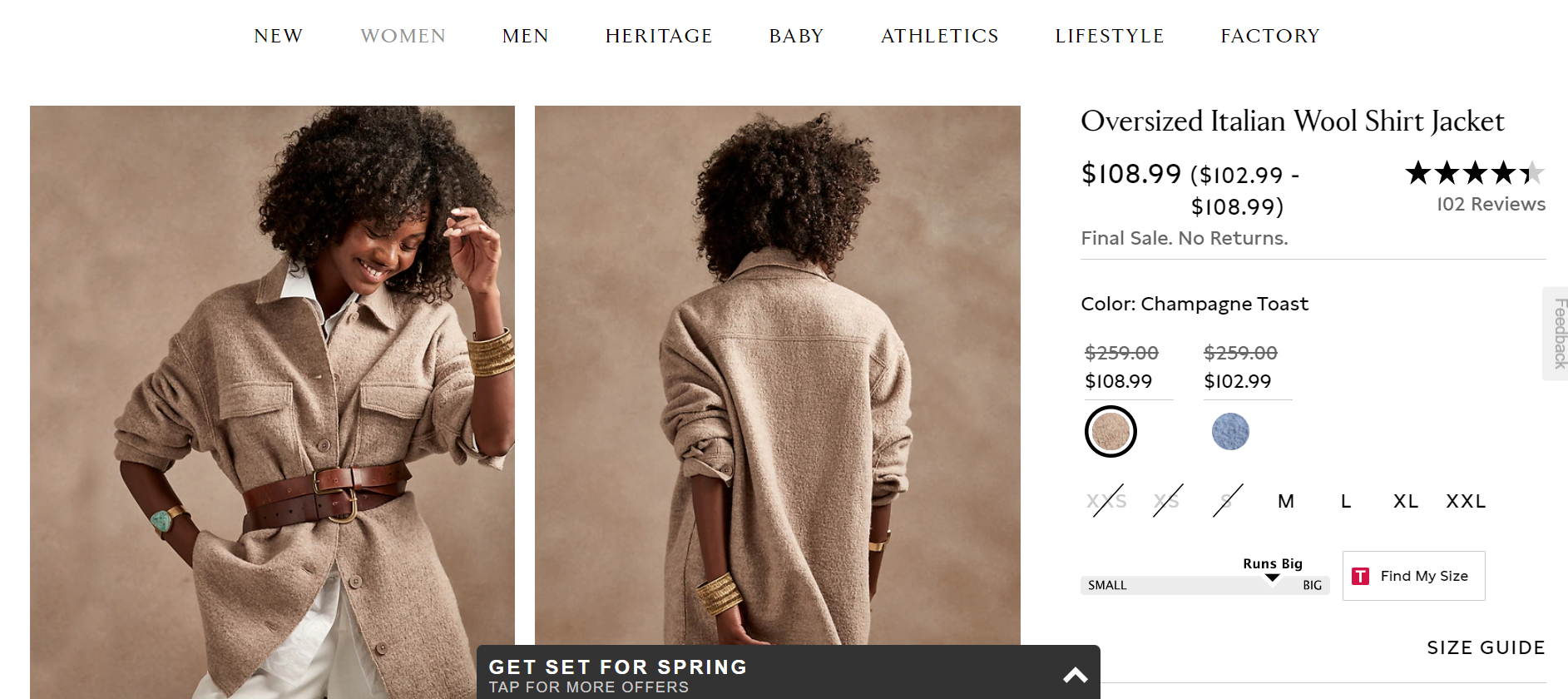
According to Adobe Analytics, holiday season online sales have set a new record in 2021. In November and December, online buyers in the United States spent $204.5 billion, up 8.6% year over year.
Harish HV, an independent consultant, believes that people are under societal pressure to spend and buy things during the holiday season. So, offering a seasonal discount will help you emotionally connect with them and help you maintain a steady cash flow and offload excess inventory.
#2. Volume Discount Pricing
It is also known as quantity discount pricing. This type of pricing strategy is implemented wherein a price reduction is offered to buyers for bulk orders.
There are two types of volume discounts:
- Non Cumulative Quantity Discount: This type of discount is offered only on one order, encouraging buyers to place high-volume orders.
- Cumulative Quantity Discount: This type of discount is offered on all orders over a specified period, and it encourages buyers for repeated purchases.
Volume discount strategy usually works for B2B eCommerce stores. Check out how The Home Depot does this by offering a discount on bulk orders:
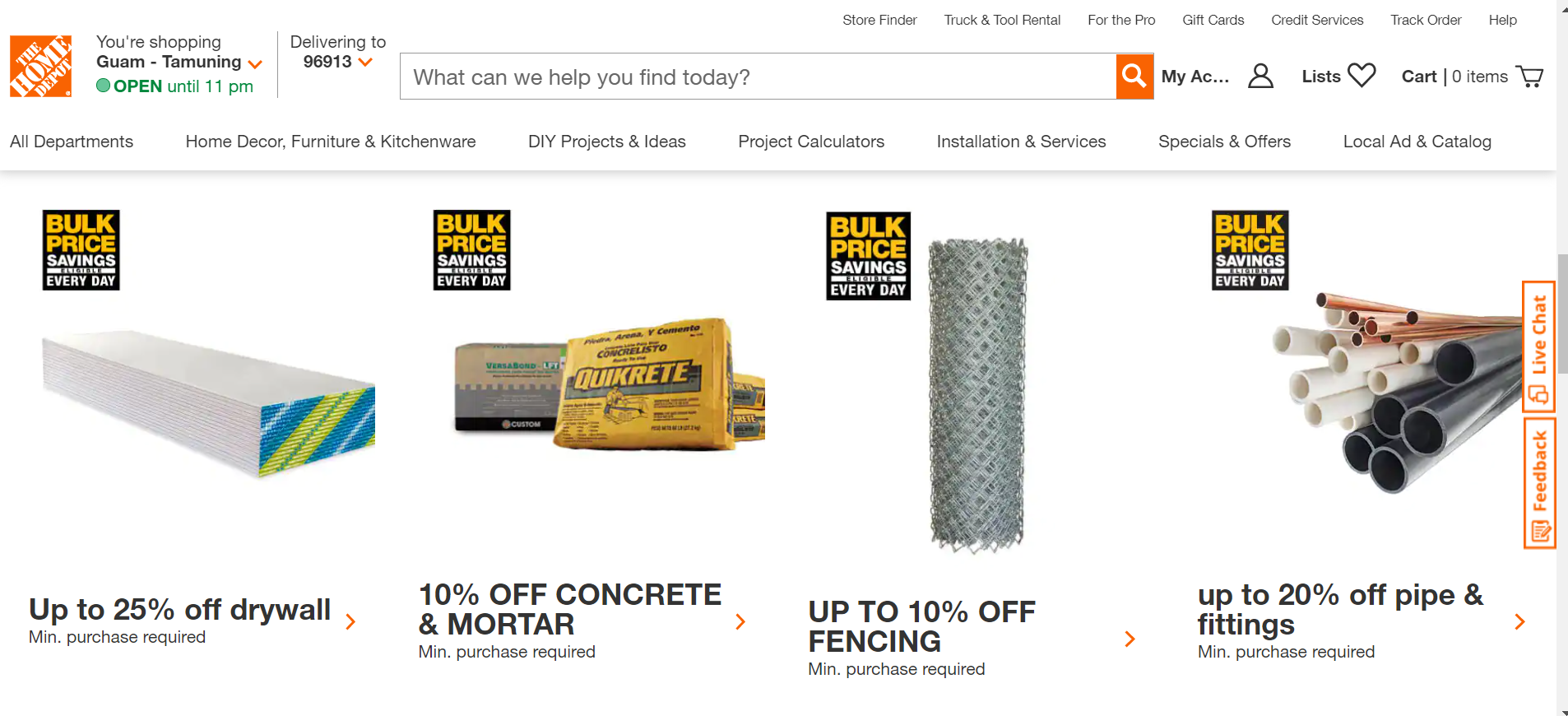
#3. Bundle Discount Pricing
This is a strategy where two or more products/services are clubbed together and sold at a price that is either lower than the accumulative prices of individual components or the same price when two or more products are added.
See how Doe Lashes bundles their false silk lashes:
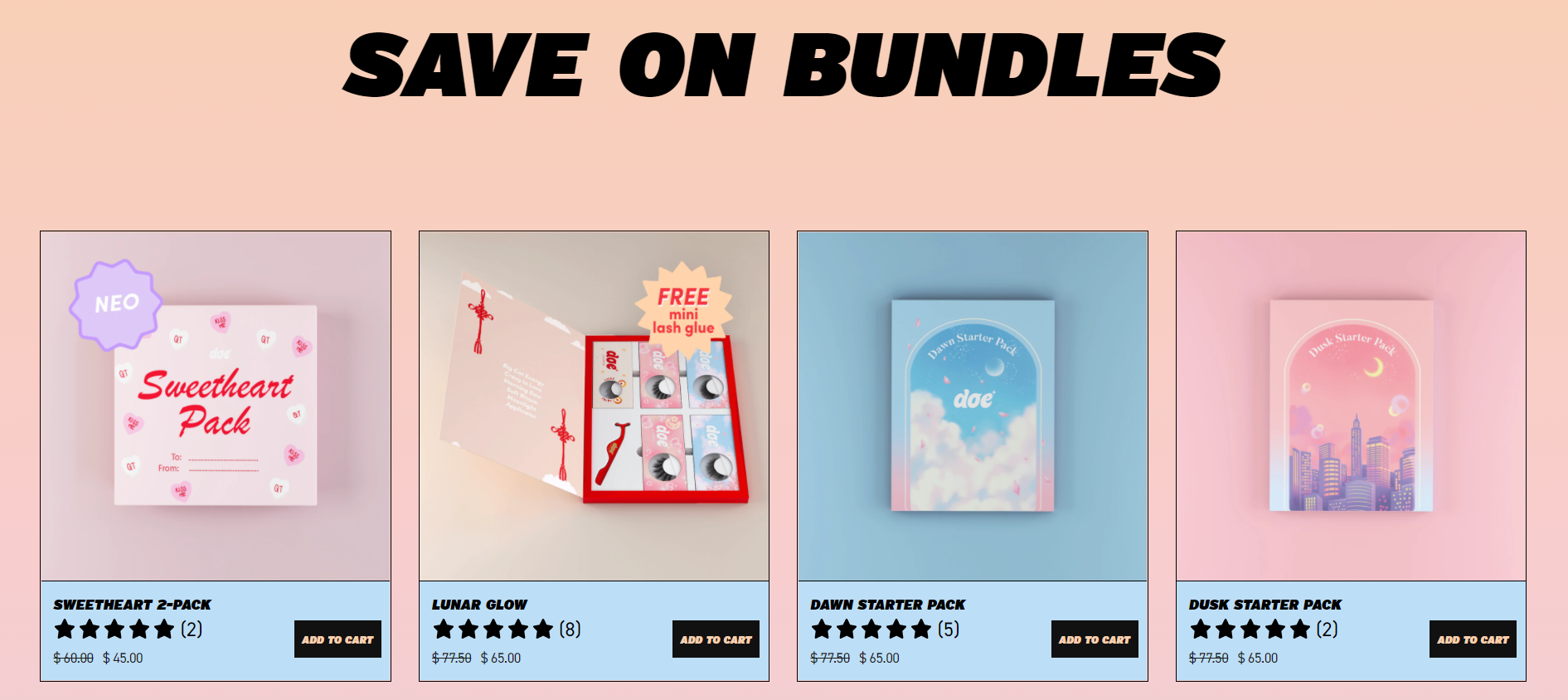
Doe Lashes increased its Average Order Value by 86% after introducing bundles. Bundling products can help you to offload slow-moving and excess inventory stocks. But along with bundles, you should also offer the flexibility to buy individual products.
For example, you are selling a bundle that includes a shampoo, a conditioner and a hair serum. Customers who do not want hair serum will not buy the bundle. In that case, you should ensure customers have the freedom to purchase individual products.
Bundle pricing is beneficial for both customers and retailers. It will allow your buyers to save time when shopping and help you to increase revenue.
#4. Repeat Customer Discount Pricing
Customers love being rewarded, and if they are repeated customers, their expectation of getting reward increases. So why not leverage the psychology of discounts to make more money from your existing customers?
For example, H&M awards loyalty points to their customers for shopping with them.
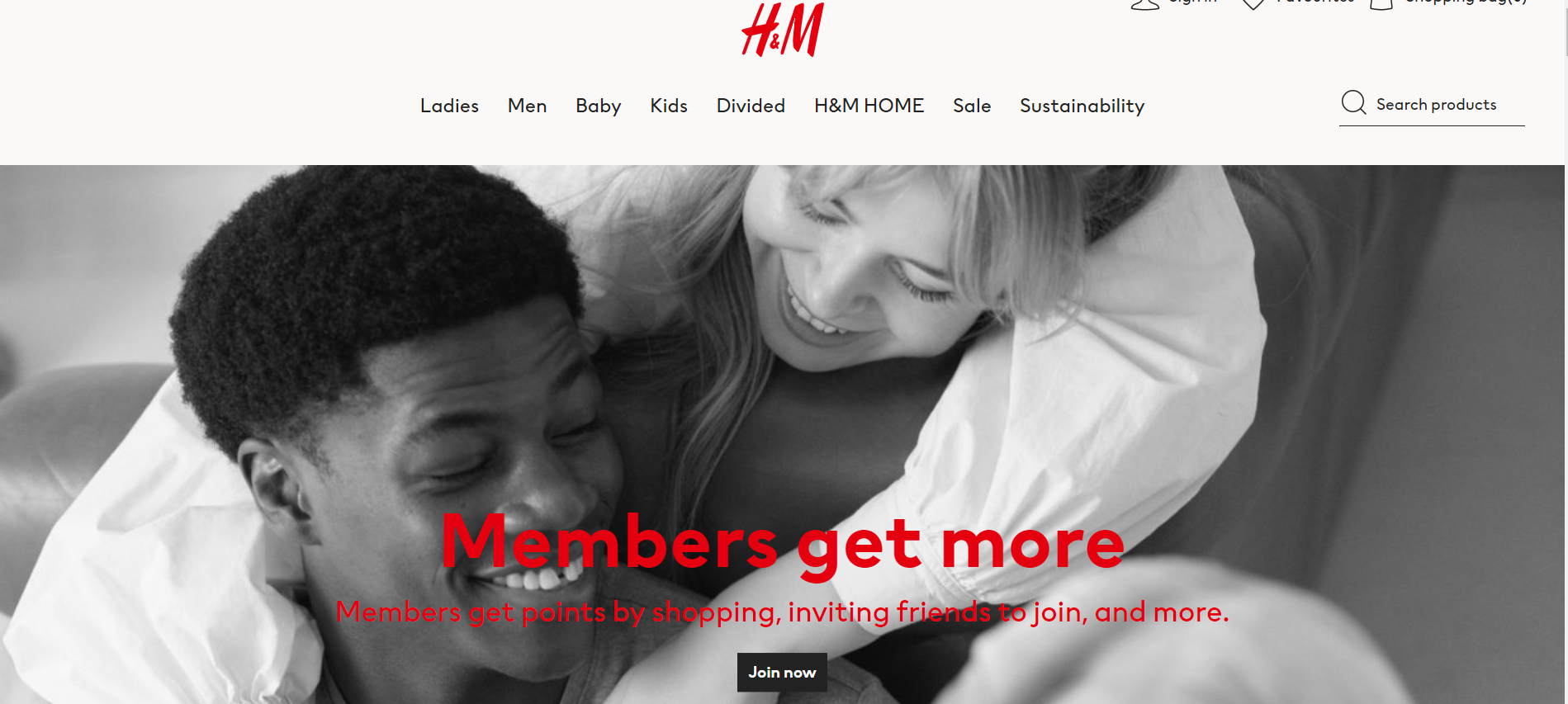
#5. New Customer Discount Pricing
eCommerce brands provide discounts to first-time buyers to build sustainable relationships with them. Such deals encourage shoppers to make a first-time purchase with a brand that is new to them.
Check out how one of Namogoo’s customer Son de Flor provides a 10% off on the first purchase:
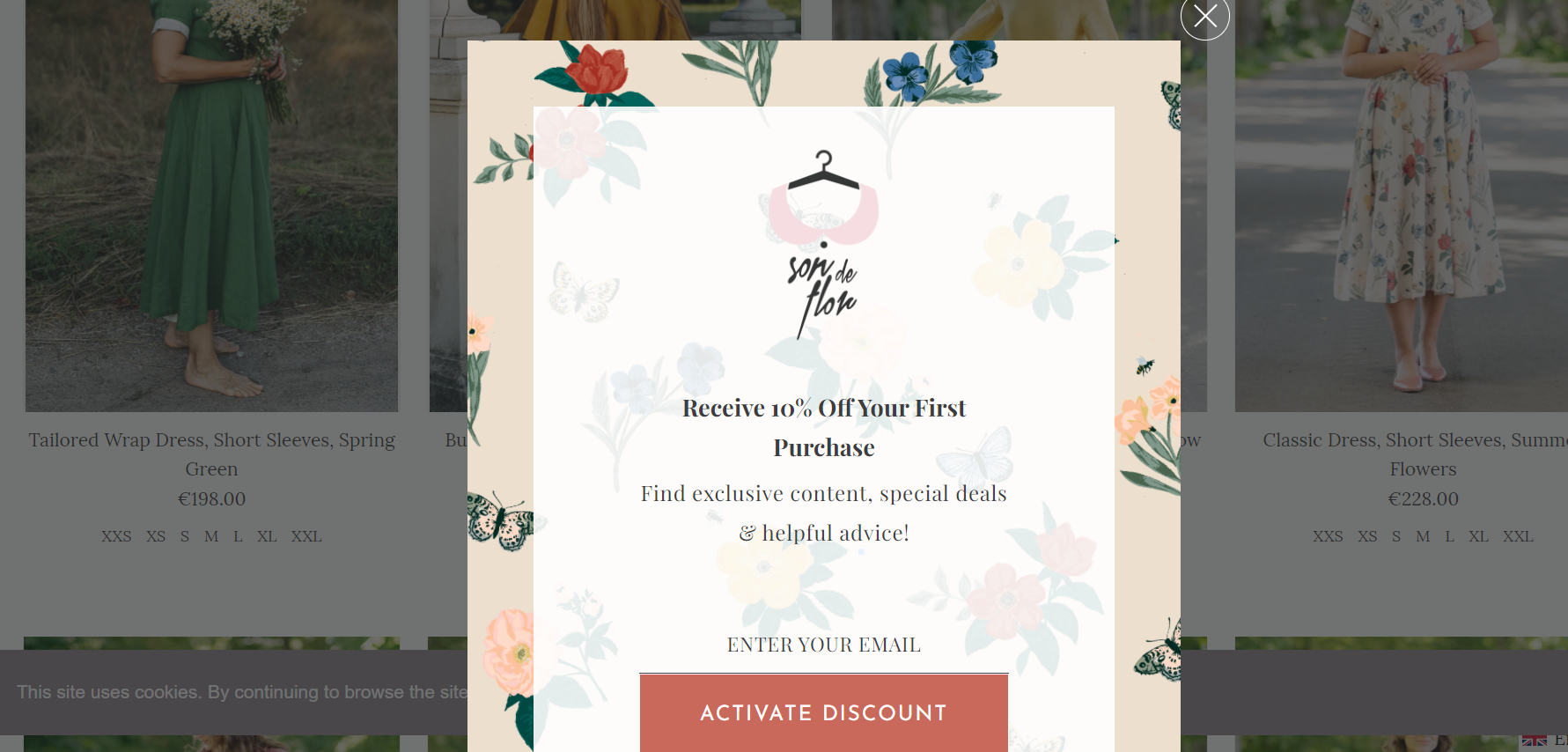
A survey by Dholakia (2012) found that a discount attracts close to 80% of new customers. In another survey two-thirds of consumers purchased just because they found a discount. In the absence of such deals, customers would otherwise abandon their carts.
#6. Buy One, Get One Discount (BOGO)
BOGO deals are promotional offers where customers are offered one or more products for a free or discounted price after purchasing other items at regular prices.
See how RACK ROOM SHOES offer 50% off on the second item after purchasing one item at the regular price:

BOGO deals help you get rid of old inventory while also lowering your cart abandonment rate. It’s an excellent way to build a loyal consumer base without advertising.
A study was conducted on 111 Malaysian respondents who had purchased products under the BOGO scheme. This study looked into the relationship between respondents’ purchase satisfaction and intention to buy on the BOGO scheme.
47 (42.3%) of the 111 respondents were highly delighted with their purchase via the BOGO deal, and 52 (46.8%) intend to repurchase. The study’s findings show that customers emphasize traits such as value-added items and quality.
#7. Free Shipping Discounts
Free shipping has become one of the most effective marketing tools and more and more online retailers prefer to offer free shipping when shoppers reach a minimum threshold.
Check out how Untuckit provides free shipping on orders of $100+:
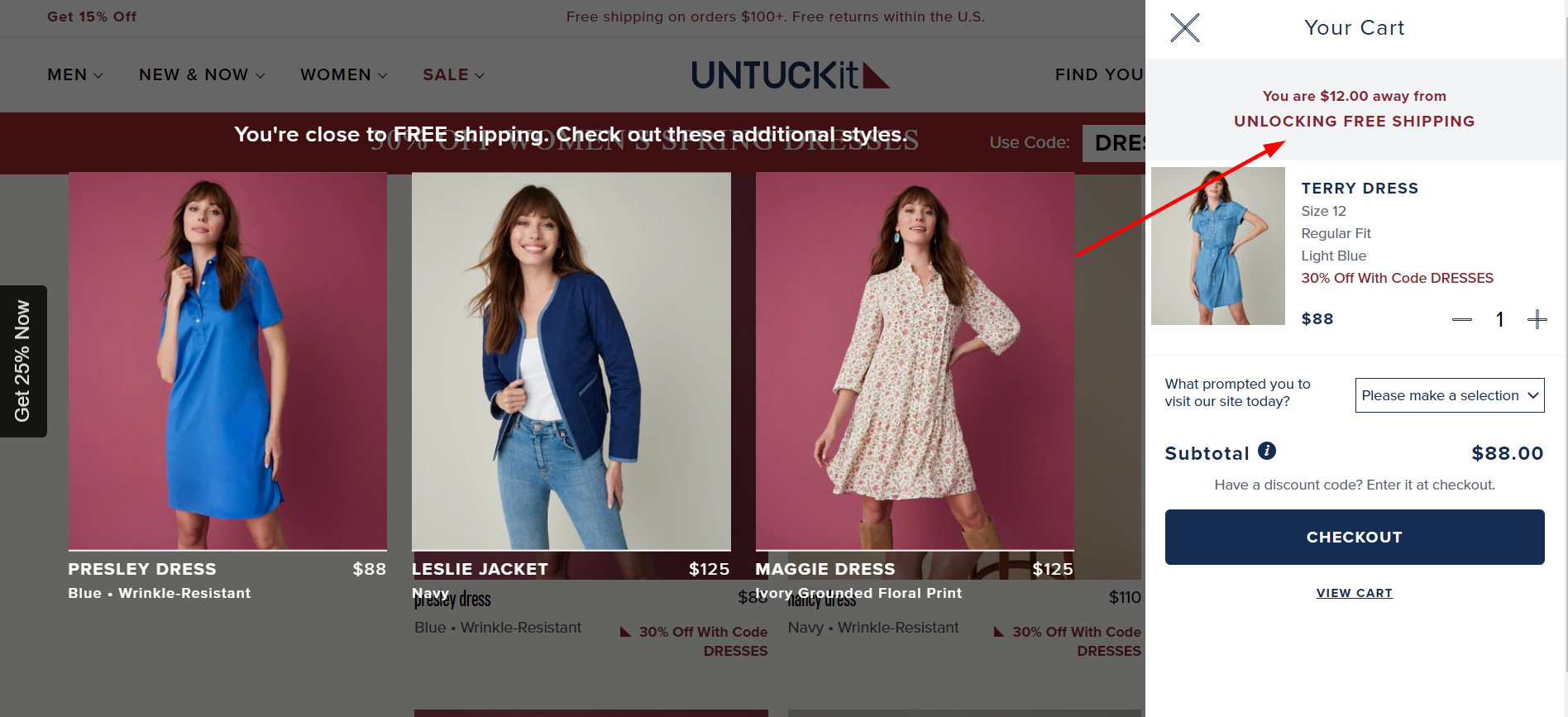
According to sendcloud 65% of Europeans leave a cart because of high shipping costs. This shows shipping is one of the significant factors to exit an online store. Makeup brand Mac provides a free discount along with free returns.

Interestingly 56% of shoppers check the return policy before making a purchase. They prefer a return policy that will include a full refund and product return for free.
The use of capital letters in ‘FREE SHIPPING’ emphasizes that the shopper receives the shipping as a freebie and thus rates the product at a higher value, making them shop with peace of mind.
#8. Referral Discounts
Customers receive referral discounts when referring a new customer to your eCommerce store. This referral code is a two-way discount, with the new client receiving a discount on their first purchase and the referrer receiving discounts based on the number of new customers they bring in.
See how Bonobos does this:
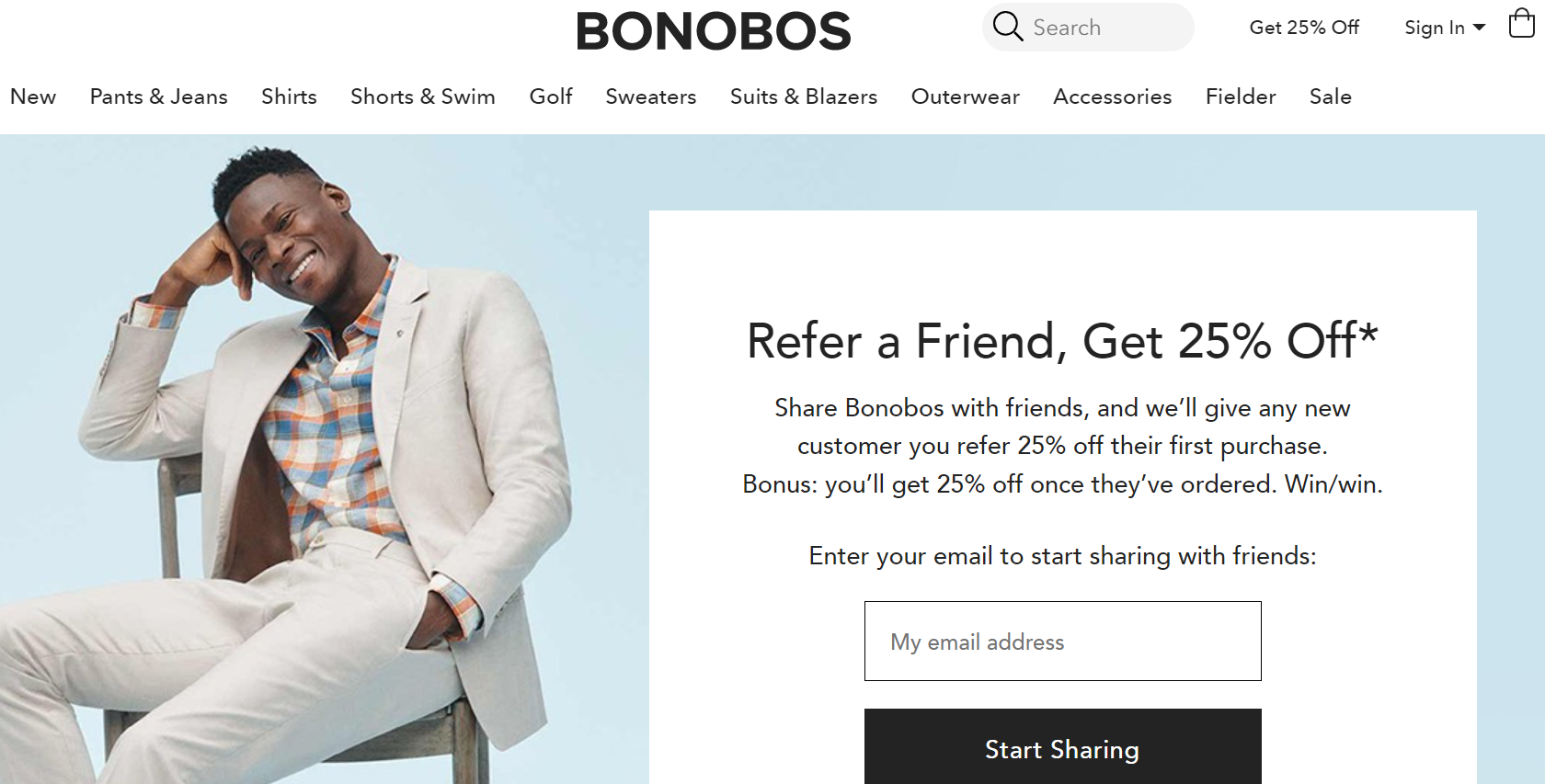
This discount approach can increase organic traffic and generate awareness of your brand. For B2B businesses, referral programs help in closing deals faster.
According to Extole, customers referred to your brand are 5X more likely to use your referral program than those who weren’t.
#9. Email Subscription Discounts
Email marketing is the soul of an eCommerce store. Offering a customer a discounted product or service to sign up for promotional newsletters attracts customers to your business.
Check out how saksfifthavenue.com does this by offering 10% off in exchange for customer’s email addresses:
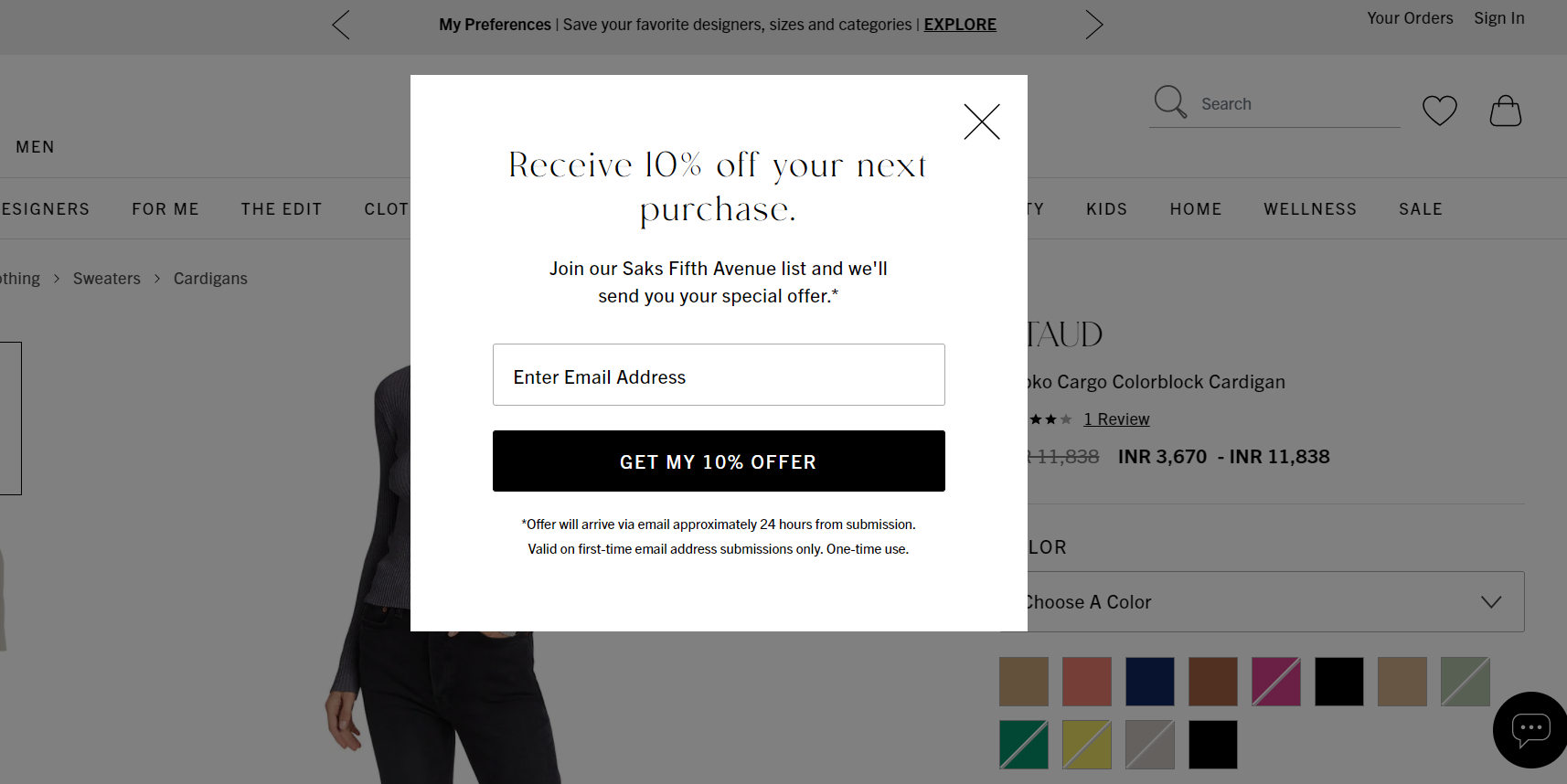
A study revealed, customers rated email discounts as the most influential factor in their purchasing decisions (at 4.15 on a scale of 1 to 7). Because email marketers have taught consumers that email messages must include discounts. But that isn’t all they desire.
Emails with product content received a score of 4.1 on the scale. This demonstrates that customers want more content from your emails, such as product information, impacting their purchasing decision.
Are you meeting their expectations with product content?
According to a study, customers prefer something extra in quantity to getting something at a lower price. But, you need to run an A/B test to know which discount strategy suits best for your eCommerce store.
Benefits & Pitfalls of Discount Pricing: Is Discounting Right For Your eCommerce Store?
The eCommerce business depends heavily on discount pricing. On the other hand, discounts might lower the perceived quality of a product and reduce customer loyalty. Discount prices may increase conversion rates, but they also diminish conversion returns.
Discounted prices, when used carefully, can boost your sales figures, but if done incorrectly, they can devalue your brand.
Here are a few reasons why discount pricing is important for your eCommerce store’s growth:
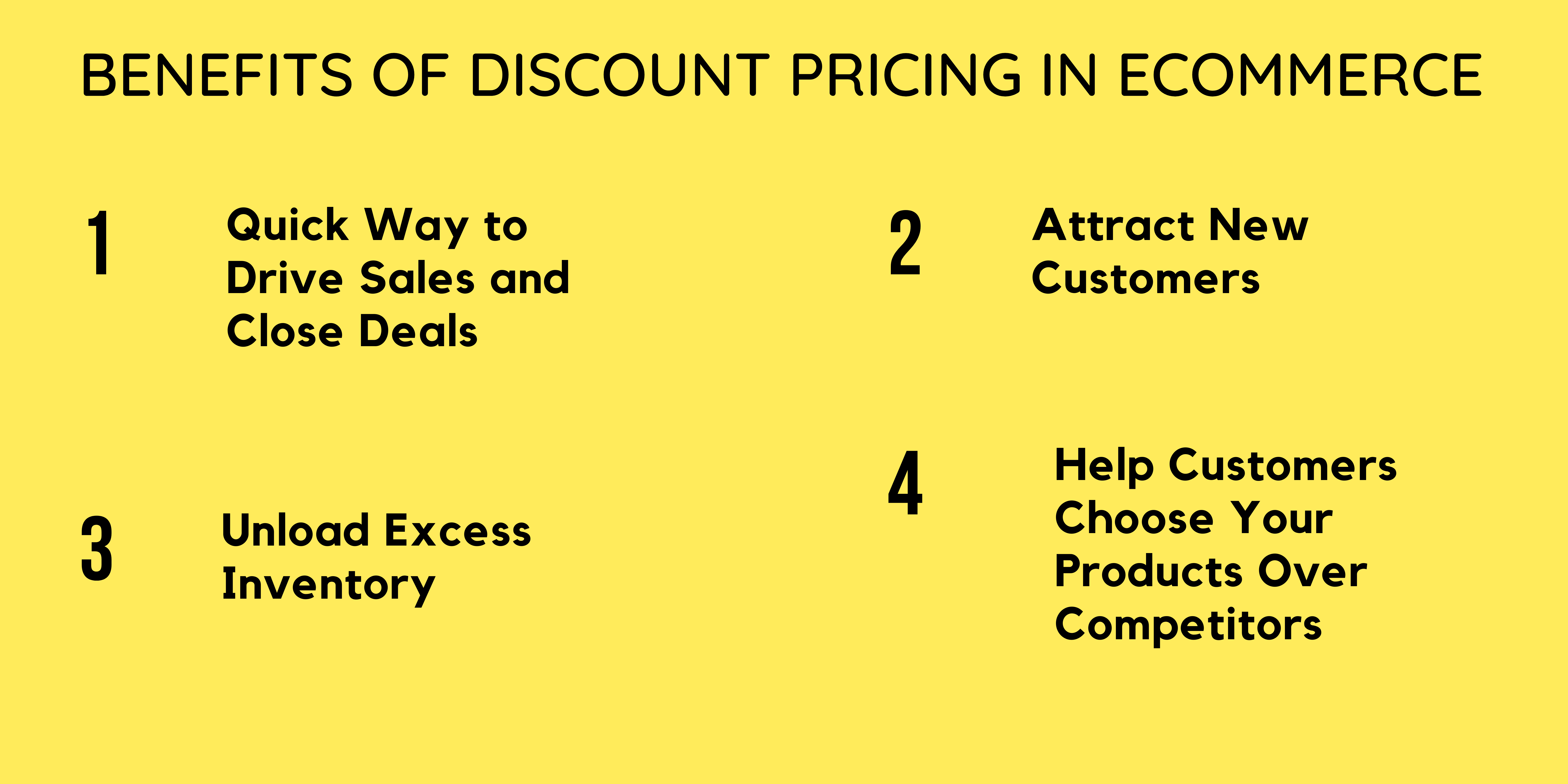
#1. Quick Way To Drive Sales and Close Deals
In a survey conducted on 1000 people 92% of shoppers used discount codes in 2019. According to Shopify, merchants with an active discount code are 8 times more likely to make a sale. Across Shopify, 17 percent of total sales were transacted using a discount coupon within 365 days.
This shows discounts drive sales and help close deals faster, and it is one of the most important reasons why most eCommerce businesses use discount pricing. They’re practical, and customers like to get an excellent deal for their money.
#2. Retain Existing Customers
Discounting a price through loyalty programs is common to retain current customers. 20% of your existing customers will make up 80% of your company’s revenue. A 5% increase in customer retention can increase your profits by 25% to 95%.
It’s interesting to know discounts usually generate quick interest from those who are in the process of deciding to buy your product.
#3. Unload Excess Inventory
Do you have some overstocked, outdated inventory blocking your storage space? Selling them at a reduced price is the only way to get rid of them and help you reinvest the money on essential products.
Check out how KOHL’S does offload its excess inventory with clearance sales:
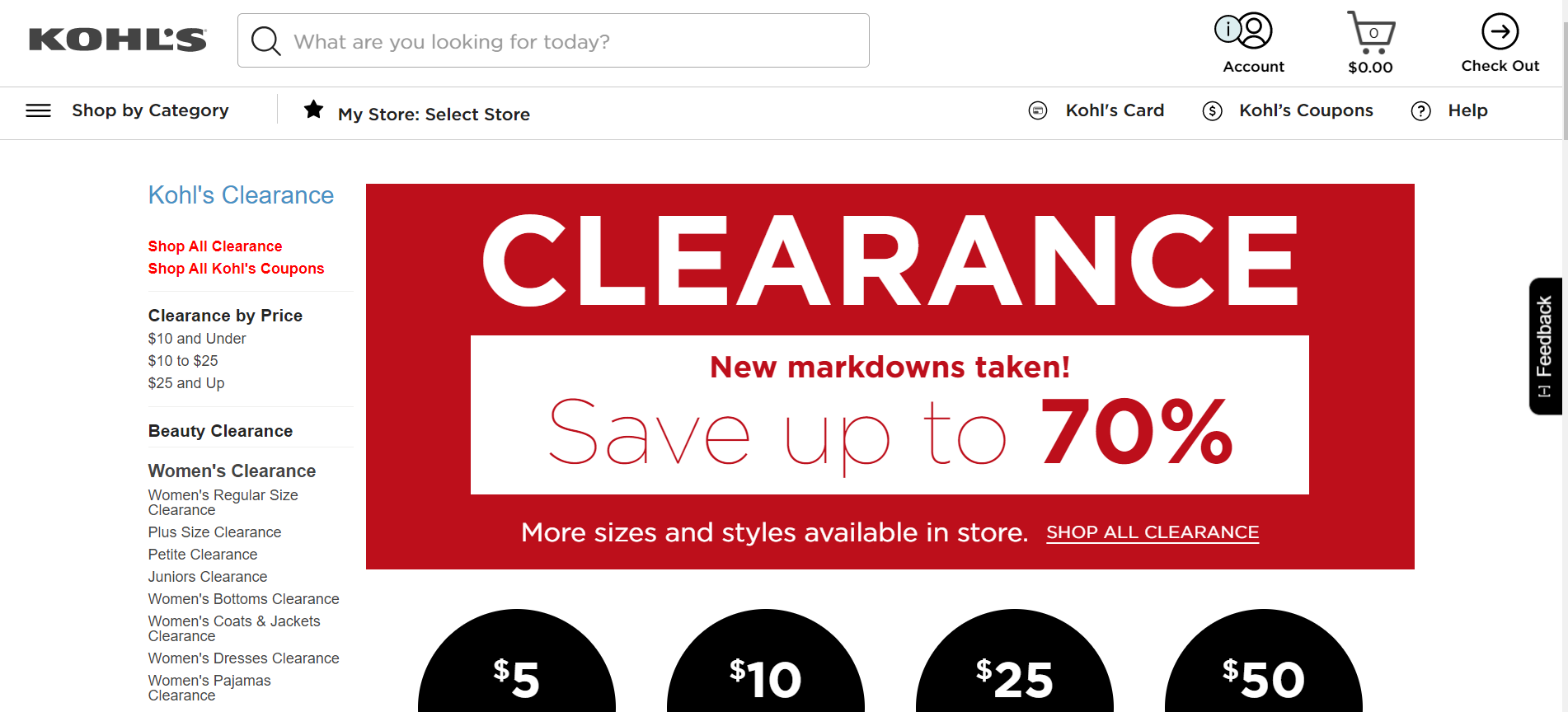
Old stock or excess inventory can be a significant expense, slowing income, raising carrying costs, and taking up valuable warehouse space, affecting profitability. Discounting, bundling, and clearance sale, BOGO are all strategies for managing excess inventory.
#4. Help Customers Choose Your Products Over Competitors
Studies show offering a discount can deter customers from looking for the same product elsewhere. This is because discounts generate a sense of urgency to buy, which diverts buyers’ attention from other options.
Discount pricing helps to build a brand reputation by delivering amazing deals. For example, you deal with crockery. So, if your eCommerce store develops a reputation as a great place to find good design crockery and where your shoppers can find reasonable prices compared to your competitors, you’ve tapped into one of the most important marketing strategies: word-of-mouth magic.
Discounts have many advantages, but offering discounts frequently can make your customer buy from you only when you reduce the price.
Customers will never feel a sense of urgency and will wait to buy from you only when your store gives a discount. Eventually, it can make your store out of business and lose its credibility.
Here are some reasons why discount pricing can hurt your brand value:
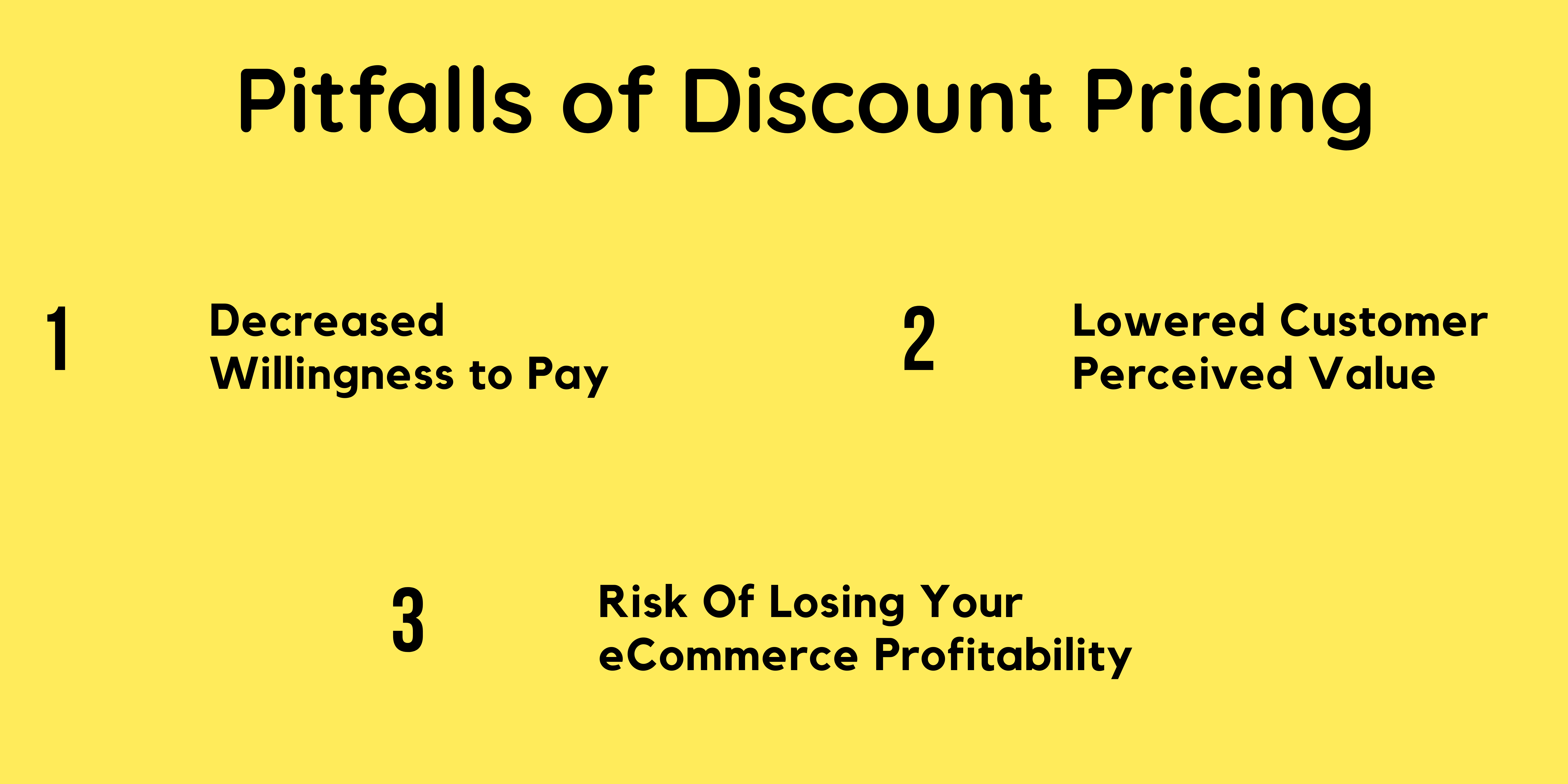
#1. Decreased Willingness to Pay
Discounts can attract customers driven by the reduced price rather than appreciate how your product solves their problem. When you give a discount, you’re usually diverting your customer’s focus from your product and placing it on price, and price becomes the only feature that matters to them.
Their willingness to pay the actual price (after discounts are removed) decreases.
#2. Lowered Customer Perceived Value
If you offer frequent discounts, you subconsciously make price the primary factor to shop from your store. In the long run, your shoppers devalue your product and can’t see any benefit in what you’re offering for the price, and hence you’ll have a lower customer perceived value.
JCPenney learnt the hard way when it gave discounts to boost sales. Sales increased, as predicted, but the difficulty came when it sought to abandon its long-standing discount policy.
Even when JC Penney decided to revert to its former strategy, sales began to decline, as customers’ perceptions of the brand were already poor.
#3. Risk Of Losing Your eCommerce Profitability
Discounts are a short-term strategy, and running excessive discounts can lead to unsustainable expectations from your customers. If you offer extreme discounts for an extended period without considering your margins, you’ll reduce your profitability to the extent that it does not make sense and ruin your brand perception.
In reality, most customers attracted to a business through discounting, never return. So, discounting can be dangerous as most eCommerce brands get trapped in thinking that it is a profitable strategy. Interestingly discounting is a good strategy only if you know when to provide a discount.
How to Know When to Provide a Discount: A Quickstart Guide
This goes without saying that human beings are inclined towards rewards that motivate them to buy from you. But still it’s surprising to see approximately 70% of shoppers abandoning carts.
Every time customers enter your store, they have a different purchasing proclivity. Treating them the same way can be stressful for your shopper, leading to withdrawal from the store.
So, the best way to maximize the psychology of discounts and make money is to replace generic offers with personalized incentives your customers will love.
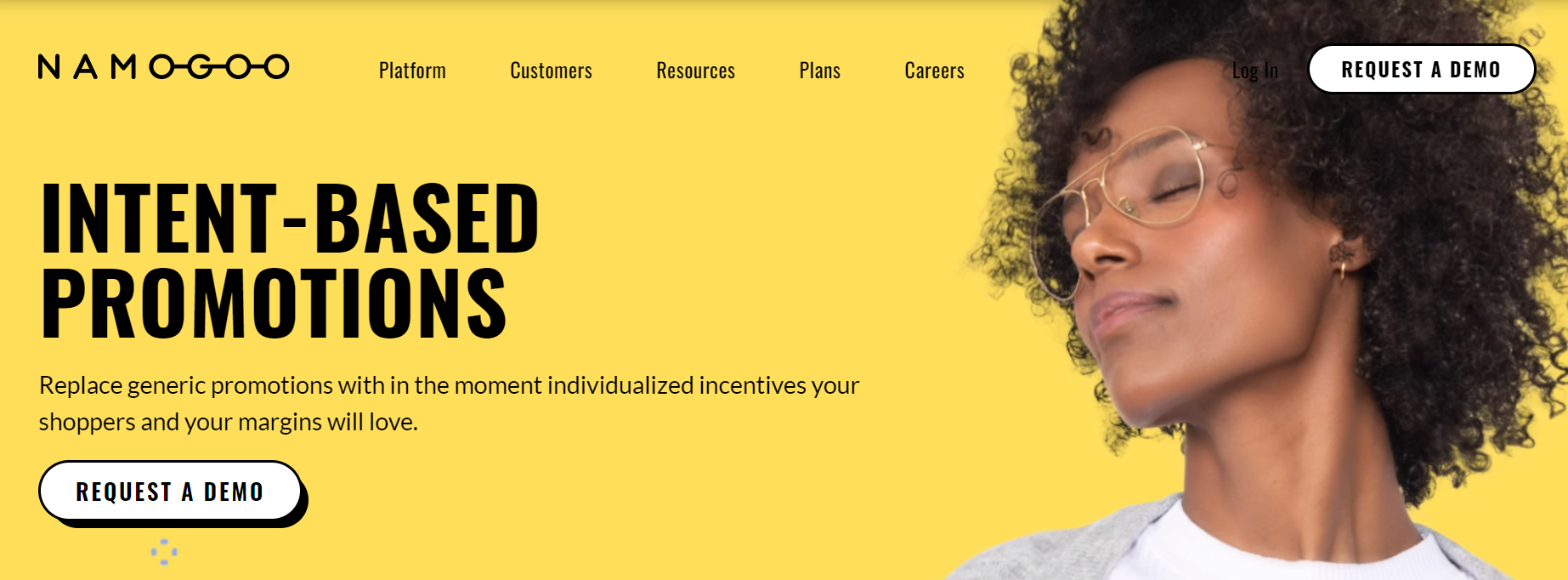
Namogoo’s AI-based Intent-Based Promotions calculates your website visitor’s intention to visit your site and identify their shopping intent. It delivers the minimum advertising needed, or no promotion, to convert them at the right point in their purchasing journey. So you know when to provide a discount.
With Intent-Based Promotion, you can give discounts to shoppers looking for one and not to shoppers who would love to pay full price or have no intention to purchase. This helps to boost sales while still keeping up with your brand’s image.
Check out how Intent-Based Promotion differs from others:
Brands that have used Namogoo’s Intent-Based Promotions report:
- 15% Increase in digital revenue
- 45% less time to purchase
- 25% cut in Promotional costs
- 15% fewer journey abandonments
Namogoo’s client WAG increased its revenue by 30% with its Intent-Based Promotion.
Namogoo’s Intent-Based Promotions also help you reduce the purchase time and decrease cart abandonment. Thus, this drives conversions and guarantees you’re not wasting your offers on people who are not looking for it.
While the AI “brain” works hard, it assists you in understanding your customers’ purchase behavior, proclivity to incentives, and the products they are most likely to purchase at a discount.
Before I wrap things up, I’d like to address a few often asked questions.
Frequently Asked Questions
-
How Effective Are Discounts?
Who doesn’t like a good deal? About 93% of customers in the United States perceive discounts to be an essential factor in deciding whether or not to buy a particular brand.
In our minds, a product/service provides satisfaction and pleasure, whereas its price causes pain. We are more likely to purchase if the joy is greater than the price.
And discounts are effective since they are one of the ways your eCommerce business may alleviate pleasure and lessen the pain.
-
Why Is a Discount Important?
According to a survey of 220 people, they reported online shopping is more enjoyable, convenient, and time-saving than a traditional form of shopping.
Thus discounts are substantial because, along with product quality, it helps your prospects to make a quick purchasing decision.
-
What Is a Discounted Price?
Discount price is a promotional strategy that involves lowering the original price to increase traffic, liquidate overstock inventory, and drive sales. People love discounts because they enjoy the sense of saving some money.
-
How Do You Create a Discount Strategy?
It is very important to focus on your business goals to create a discount strategy. Some of the goals that you can have are:
- Acquisition of New Customers
- Increase Your Sales
- Gain Repeat Customers
- Liquidation of excess or old Inventory
Depending upon your goal, create the discount strategy discussed above.
Are You Ready To Level Up Your Business With Intent-Based Promotion?
When it comes to discounts for your eCommerce store, a lot of thinking goes into them.
You have to think about how you’ll offer discounts, how you’ll promote them, how they will impact your business and most importantly, to whom to offer discounts.
Fortunately, Namogoo’s Intent-Based Promotions can get inside your customer’s mind and uncover his shopping intent.
Request for a demo here.
Disclaimer: This post was written as a sample for a client.

